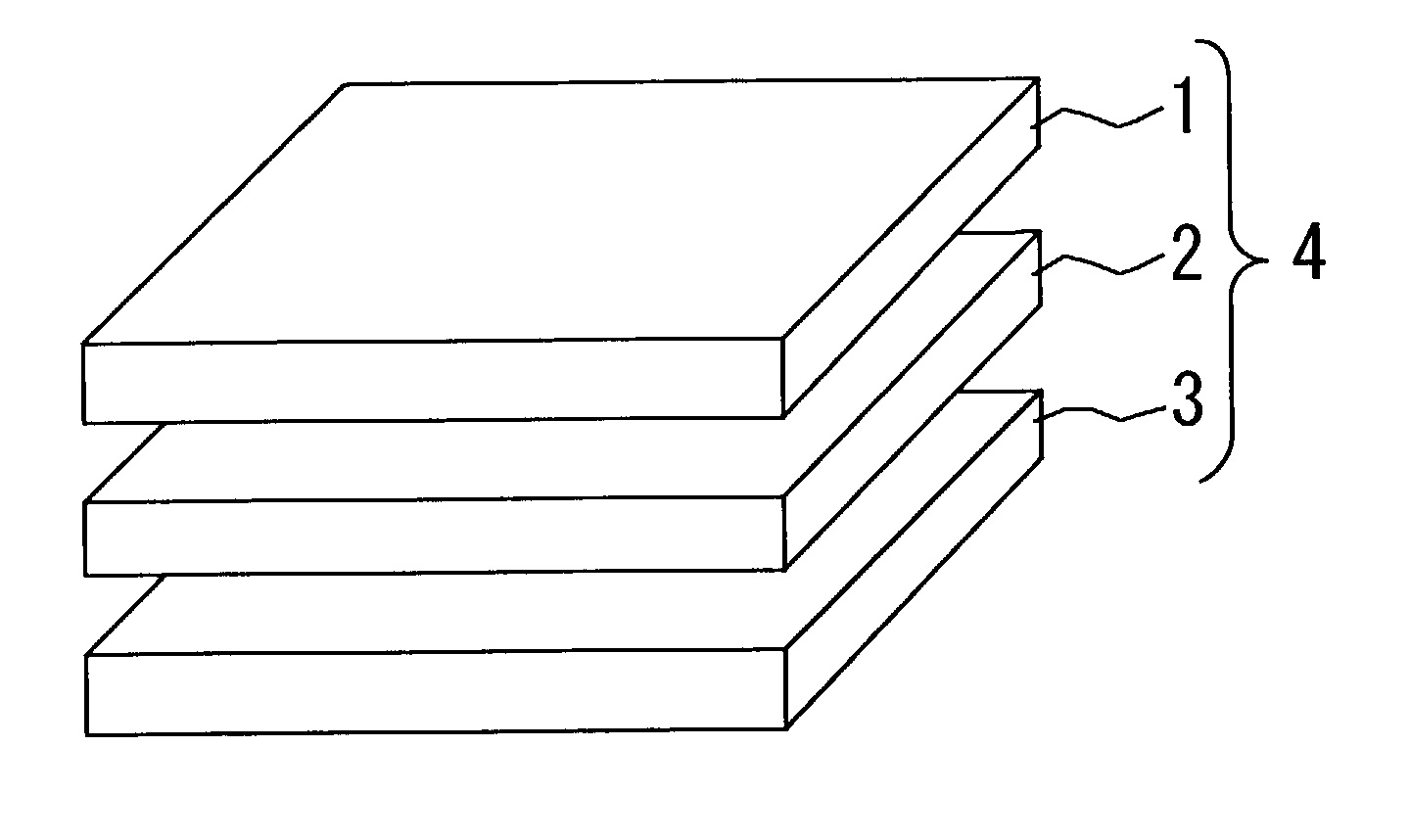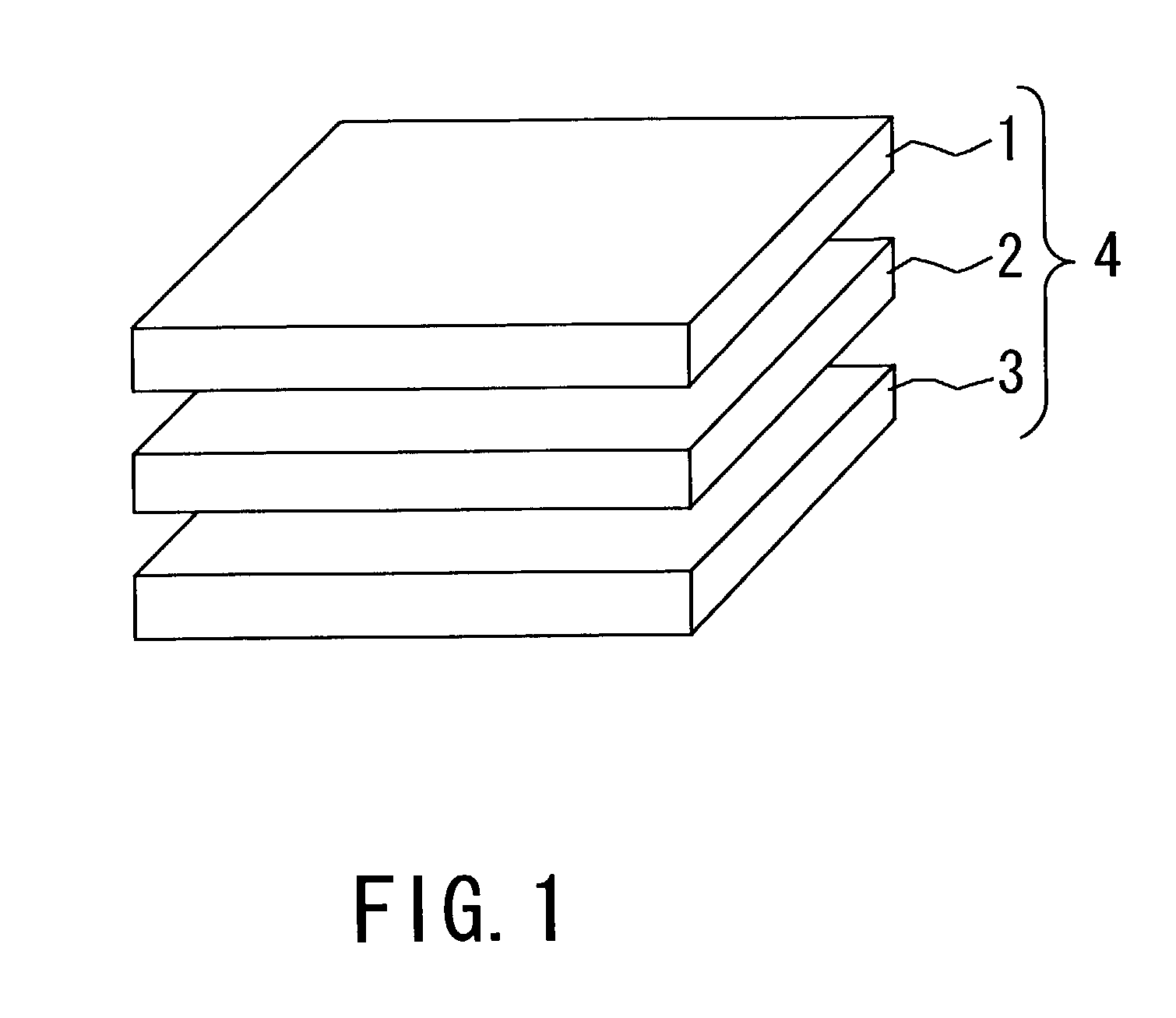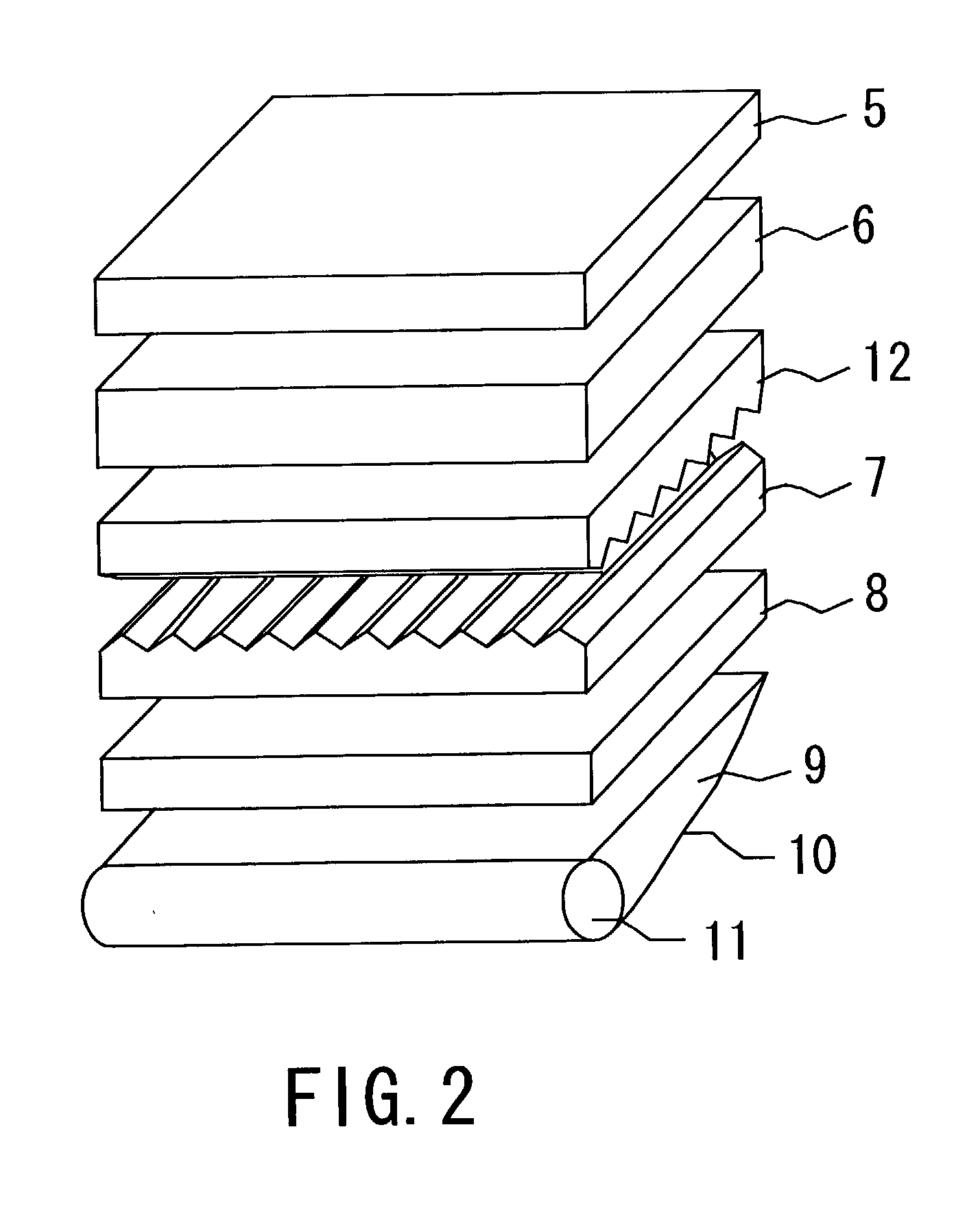Optical film and a liquid crystal display using the same
a liquid crystal display and optical film technology, applied in the field of optical film and liquid crystal display using the same, can solve the problems of insufficient improvement of the components at the backlight (e.g., light-transmission plates and cfls) to achieve the brightness required in the lcds, and the use of collimating film is required
- Summary
- Abstract
- Description
- Claims
- Application Information
AI Technical Summary
Problems solved by technology
Method used
Image
Examples
examples
[0053] The present invention will be described below more specifically by referring to Examples and Comparative Examples, though the present invention is not limited to the Examples.
[0054] In the Examples, the brightness enhancement film was prepared as described below by laminating a cholesteric liquid crystal layer, a .lambda. / 4 plate, and absorption dichroic polarizing plate in this order.
example of
production of a brightness enhancement film
[0055] A polyvinyl alcohol oriented film having a thickness of 0.1 .mu.m was formed on a triacetylcellulose (TAC) film having a thickness of 50 .mu.m. Subsequent to a rubbing treatment, cholesteric liquid crystal polymers, being 700 nm, 550 nm, and 400 nm in the central wavelengths of selective reflection, were formed successively in three layers on the oriented film. The respective layers had a thickness of about 3 .mu.m. A .lambda. / 4 plate made of polycarbonate and 60 .mu.m in thickness was adhered to this cholesteric liquid crystal layer by using an acrylic pressure-sensitive adhesive. Iodine-based polarizing plates (having acrylic pressure-sensitive adhesive layers formed on both surfaces thereof were attached to the plate by aligning the transmission axis so as to obtain a brightness enhancement film.
[0056] Although not specifically mentioned in this example, it is preferable that the prism shape of the collimating film is optimized de...
example 1
[0065] A die having a prism pattern with a point angle of 45.degree. and a 50 .mu.m pitch was prepared. Separately, a brightness enhancement film made of triacetylcellulose (TAC) having a multi-layered cholesteric liquid crystal polymer film was prepared in accordance with the above-described method. Acrylic resin 8 .mu.m in thickness was coated on a surface of the brightness enhancement film, i.e., a surface opposite to the multi-layered film. Then, the pattern was heat-transferred with heat-pressing by using the die so as to obtain a brightness enhancement film having a light-condensing function.
[0066] A diffusion plate (8) made of an acrylic resin was mounted on a light-transmission plate (9) made of polymethylmethacrylate. A sheet of collimating film (7) made of acrylic resin was mounted thereon. A brightness enhancement film (12) of the present invention, having a light-condensing function, was superposed on the film so as to obtain a liquid crystal display as shown in FIG. 2. ...
PUM
 Login to View More
Login to View More Abstract
Description
Claims
Application Information
 Login to View More
Login to View More - R&D
- Intellectual Property
- Life Sciences
- Materials
- Tech Scout
- Unparalleled Data Quality
- Higher Quality Content
- 60% Fewer Hallucinations
Browse by: Latest US Patents, China's latest patents, Technical Efficacy Thesaurus, Application Domain, Technology Topic, Popular Technical Reports.
© 2025 PatSnap. All rights reserved.Legal|Privacy policy|Modern Slavery Act Transparency Statement|Sitemap|About US| Contact US: help@patsnap.com



